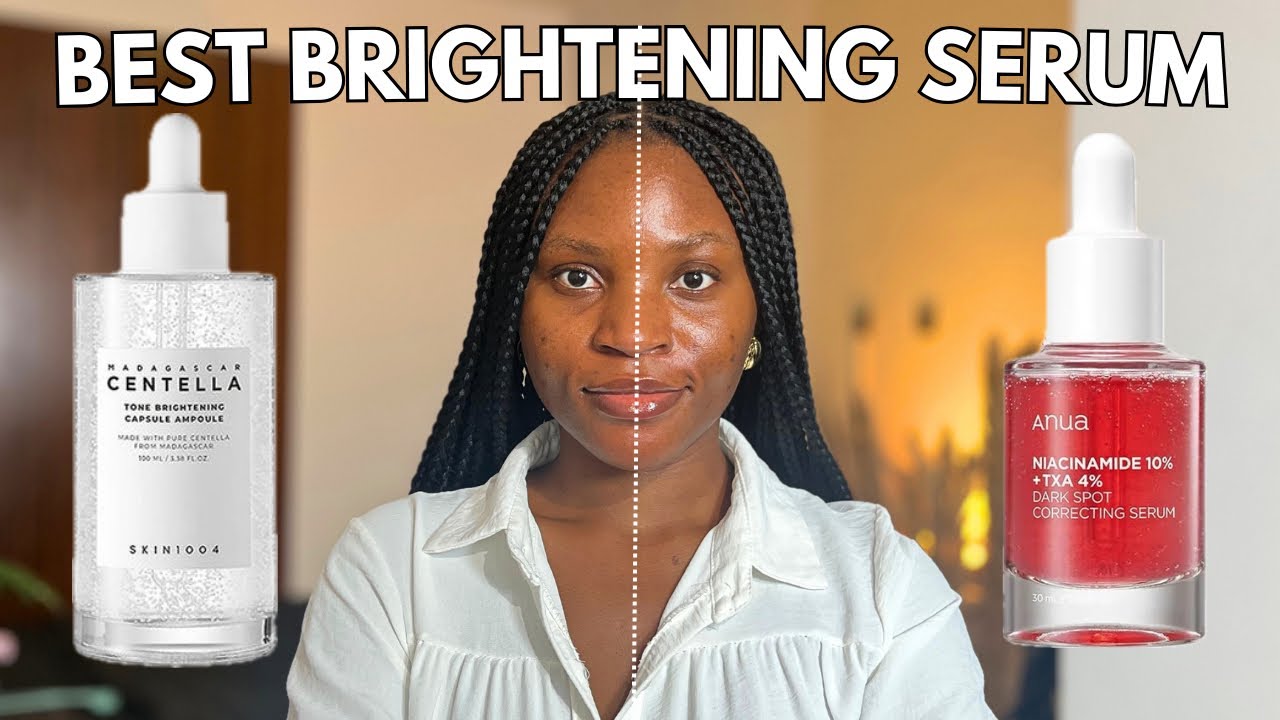The Truth About Tranexamic Acid Serum
Summary
TLDRThis video script delves into the efficacy of tranexamic acid in skincare, particularly for melasma and hyperpigmentation. It explains how this synthetic lysine derivative, traditionally used to stop bleeding, can reduce pigmentation by inhibiting UV-induced inflammation. The script reviews various clinical studies on topical formulations, highlighting variable results and the importance of formulation for penetration. It also discusses additional benefits like improved barrier function and reduced redness, suggesting tranexamic acid's potential as a cost-effective, soothing, and multifaceted skincare ingredient.
Takeaways
- 🧪 Tranexamic acid is a synthetic derivative of lysine, an amino acid, used since the 1960s to stop bleeding and treat conditions like menaga and melasma.
- 💊 When taken orally, tranexamic acid is effective in treating melasma, a skin condition characterized by hyperpigmentation and abnormal blood vessel formation due to hormonal and UV exposure.
- 🌞 The drug works against melasma by inhibiting the activation of plasminogen in keratinocytes, which is triggered by UV exposure and leads to increased pigment production.
- 🧴 Topical application of tranexamic acid in skincare products has shown variable results in clinical studies, suggesting that the formulation and concentration are crucial for effectiveness.
- 🔬 Tranexamic acid's polar nature raises questions about its ability to penetrate the skin effectively, which may limit its impact on hyperpigmentation when applied topically.
- 🛠️ Multiple clinical studies have tested different formulations of topical tranexamic acid, with varying results, indicating that the formulation plays a significant role in its effectiveness.
- 🌈 Tranexamic acid may also improve skin barrier function and reduce redness, offering benefits beyond hyperpigmentation, such as relief for conditions like rosacea.
- 🛑 The treatment of melasma and hyperpigmentation typically requires a multi-modal approach, combining various topical ingredients and treatments to target different aspects of pigmentation.
- 💡 Tranexamic acid's role in skincare is not limited to pigment reduction; it also has anti-inflammatory properties and may improve overall skin radiance and evenness.
- 💡 Sun protection is essential for managing melasma and preventing the recurrence of hyperpigmentation, as UV rays are a significant contributing factor.
- 🛒 There are several skincare products on the market containing tranexamic acid, such as the Polish Choice discoloration Repair Serum and the minimalist 3% tranexamic acid serum, which also contain other beneficial ingredients like niacinamide and mandelic acid.
Q & A
What is Tranexamic Acid?
-Tranexamic acid is a synthetic lysine derivative, an amino acid, which has been used for decades since the 1960s to stop bleeding. It's often used to treat menaga (heavy periods) and hyperpigmentation conditions like melasma.
How does Tranexamic Acid work for melasma?
-Tranexamic acid works for melasma by targeting plasminogen in keratinocytes at the bottom layer of the epidermis. It prevents the release of inflammatory mediators triggered by UV exposure, which leads to increased melanogenesis and hyperpigmentation.
What is the role of plasminogen in the context of melasma?
-Plasminogen is a target for tranexamic acid in keratinocytes. Its activation by UV exposure leads to the release of inflammatory mediators, which in turn trigger an increase in melanogenesis and hyperpigmentation.
Are there any clinical studies on the topical application of Tranexamic Acid for skin conditions?
-Yes, there are several clinical studies examining different formulations of topical tranexamic acid, such as 3% cream, 5% gel, and 3% solution, applied for 12 weeks each. The results vary, with some showing promise for improving melasma and others showing no effect.
How important is the formulation of topical Tranexamic Acid products?
-The formulation is crucial because the structure of tranexamic acid is polar, and it may not reach a meaningful concentration in the skin without proper formulation, which could affect its effectiveness in suppressing UV-mediated pigment production.
Can Tranexamic Acid improve skin conditions other than hyperpigmentation?
-Yes, Tranexamic acid can improve barrier function and has been examined for conditions like rosacea, offering symptomatic relief for sensitivity, redness, and burning. It also inhibits angiogenesis, reducing abnormal blood vessel formation and facial redness.
What is the difference between skin lightening and skin brightening?
-Skin lightening refers to a reduction in melanin pigment, while skin brightening is an overall improvement in skin radiance and luminosity, which can result from better barrier function, moisturization, and a reduction in inflammation leading to redness.
How does Tranexamic Acid affect the skin's barrier function?
-Tranexamic acid can improve the skin's barrier function by inhibiting PAR-2, which helps in reducing sensitivity and irritation, and can be beneficial for conditions like rosacea and melasma by limiting the penetration of irritating substances.
What are some of the products available in the market that contain Tranexamic Acid?
-There are products like the Polish Choice Discoloration Repair Serum with 3% tranexamic acid and 5% niacinamide, and the Minimalist 3% Tranexamic Acid Serum with mandelic acid and other ingredients to improve skin tone and address hyperpigmentation.
What are some considerations when using topical Tranexamic Acid for skin care?
-It's important to set realistic expectations, as topical tranexamic acid may not be a one-size-fits-all solution. It shows promise but requires more research. It's generally well-tolerated and may play a supporting role in a multi-modal approach to treating skin conditions like melasma and rosacea.
Why is sun protection important when dealing with skin conditions like melasma and rosacea?
-Sun protection is crucial because UV rays are a significant contributing factor to these conditions. They can drive issues like hyperpigmentation and inflammation, worsening or causing the recurrence of conditions like melasma, rosacea, and post-acne marks.
Outlines

This section is available to paid users only. Please upgrade to access this part.
Upgrade NowMindmap

This section is available to paid users only. Please upgrade to access this part.
Upgrade NowKeywords

This section is available to paid users only. Please upgrade to access this part.
Upgrade NowHighlights

This section is available to paid users only. Please upgrade to access this part.
Upgrade NowTranscripts

This section is available to paid users only. Please upgrade to access this part.
Upgrade NowBrowse More Related Video

HYPERPIGMENTATION LAYERING

ANUA DARK SPOT CORRECTING SERUM REVIEW | Does it actually work + How to properly use #darkspots

How To Fade Dark Marks On Your Body (fast!) | Dr Hani

ANUA DARK SPOT CORRECTING SERUM VS SKIN 1004 TONE BRIGHTENING CAPSULE AMPOULE #hyperpigmentation

Skincare That You DON'T NEED (But Might Want)

Hyperpigmentation treatment at home | Nipun Kapur
5.0 / 5 (0 votes)